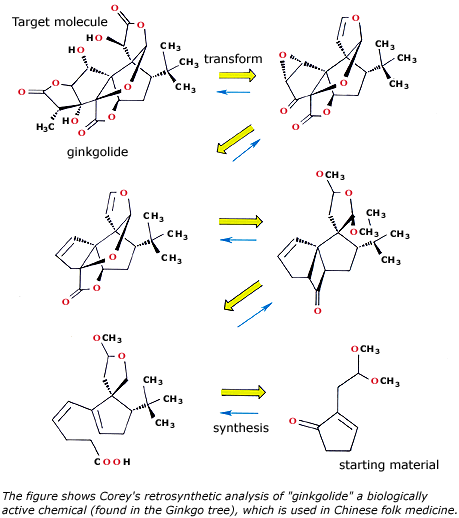The logic of chemical synthesis
Products such as plastics, synthetic fibres, paints and pigments, pharmaceuticals and pesticides and many others have become readily available through the dynamic development of organic synthesis (the science of building organic molecules).
There are many ways to build a complex molecule from simple starting materials but to find the simplest way is often difficult. It is necessary to proceed not only in a creative but also in a systematic and logical way.
Elias J. Corey has developed theories and methods by which the organic chemist can handle these problems. He begins with the target molecule, i.e. the molecule he wants to make, and then, using methods described in the section below, he breaks the target molecule down into several simple “building blocks”, starting material. This process, in itself, is nothing new. However, the method for doing this is new and is called
retrosynthetic analysis.

Nobel Prizes and laureates
Six prizes were awarded for achievements that have conferred the greatest benefit to humankind. The 14 laureates' work and discoveries range from quantum tunnelling to promoting democratic rights.
See them all presented here.
